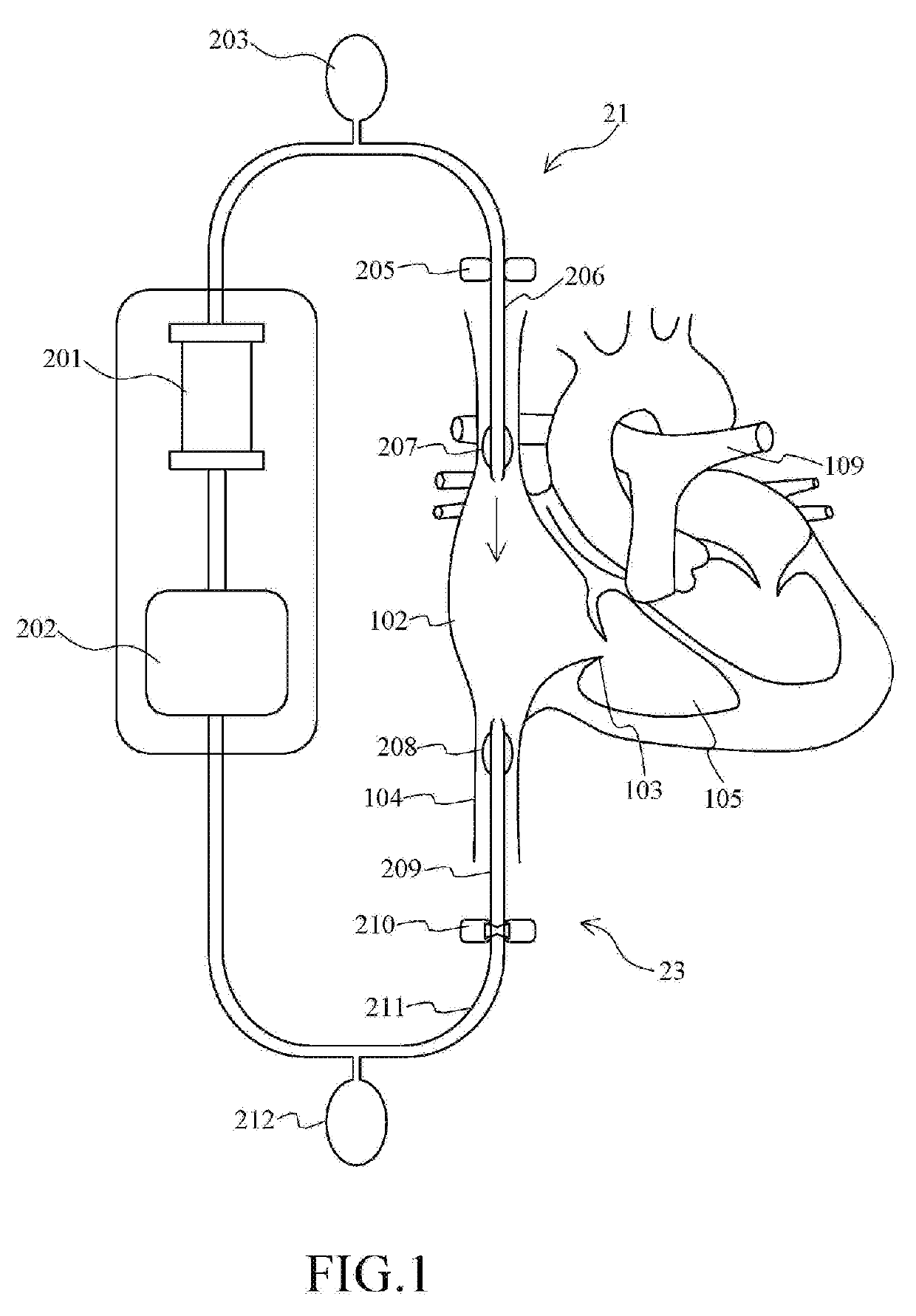Extracorporeal life support system
a life support system and extracorporeal technology, applied in the field of extracorporeal life support systems, can solve problems such as cell damage, and achieve the effects of reducing recirculation, reducing tubular flow shear stress, and reducing flow resistan
- Summary
- Abstract
- Description
- Claims
- Application Information
AI Technical Summary
Benefits of technology
Problems solved by technology
Method used
Image
Examples
Embodiment Construction
[0036]The essence of the present control method is to regulate venous return and ECMO cannula flow in accordance to the tricuspid valve motion. The objective is to minimize the recirculation drawback associated with VV ECMO. FIGS. 1 and 2 illustrate the locations of each disposed control element and the operational mode desired to minimize recirculation occurring respectively in systolic and diastolic phases. FIGS. 1 and 2 are schematic illustrating the VV ECMO circuit in relation to the pulmonary circulation according to an embodiment of the invention. An extracorporeal life support system 20 comprises an oxygenator 201, a blood pump 202, an infusion cannula assembly 21 and a drainage cannula assembly 22. The oxygenator 201 and the blood pump 202 are disposed outside the patient's body. Further, the infusion cannula assembly 21 is placed opposite to the drainage cannula assembly 22. In one embodiment of the invention, the drainage cannula assembly 22 may comprise a drainage balloon...
PUM
 Login to View More
Login to View More Abstract
Description
Claims
Application Information
 Login to View More
Login to View More - R&D
- Intellectual Property
- Life Sciences
- Materials
- Tech Scout
- Unparalleled Data Quality
- Higher Quality Content
- 60% Fewer Hallucinations
Browse by: Latest US Patents, China's latest patents, Technical Efficacy Thesaurus, Application Domain, Technology Topic, Popular Technical Reports.
© 2025 PatSnap. All rights reserved.Legal|Privacy policy|Modern Slavery Act Transparency Statement|Sitemap|About US| Contact US: help@patsnap.com



